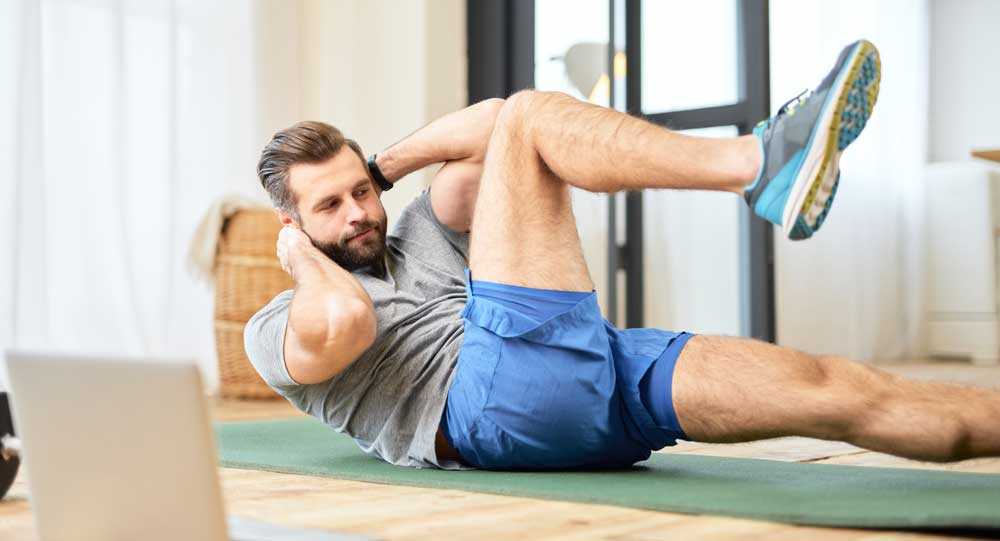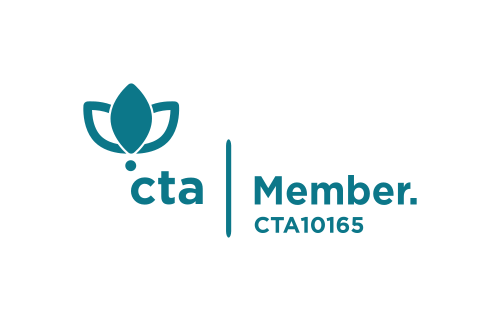5 exercises you can do at home if you are stressed or anxious
- Ryan Costello
- April 29, 2022
- 7:40 am

Tackling stress and anxiety can be a challenge for most people at the best of times, however we do know from current research that exercise helps to restore natural hormones and chemicals responsible for mood and balance.
Here are some of the best exercises you can do at home to reduce stress and anxiety.
1) Think about the basics- breathing
We think of breathing as this natural physiological response that the body does to stay alive, while this is right the powers of breathing (and breathing correctly) have been under estimated in health and fitness for a long time. More and more studies is coming around about good breathing techniques and how it can improve cognitive and physical performance. Controlled slow breathing for 12 weeks has been shown to improve stress levels and cardiovascular parameters.
Try to sit comfortable, close the eyes and keep the shoulders back but relaxed towards the floor. The goal is to start inhaling through your nose for 4 seconds hold for a second and then exhale through the nose for 8 seconds. Try practicing for 5 minutes a day.
2) Attempt to hold static positions – Isometric training
If you have never heard of isometric training you won’t need to look far on the internet to find tons of evidence to support its notion. Studies have been done on people to examine the effects of isometric training and resting blood pressure. The results showed a significant reduction in 8 weeks therefore improving overall wellness. Great for people with injuries or less mobile to build up their strength.
You can try by holding certain positions while under tension for around 10secs a set then try to build up to more time and sets. Popular isometric exercises are, prayer pose, plank, low squat, and even self arm wrestling. Apply the above breathing technique for extra concentration.
3) Choirs around the house – cardio
Firstly we are talking about light aerobic exercise to help support the parasympathetic nervous system and not a full on marathons. This is the system that regulates heart rate, the digestive system and other internal organs, it is sometimes referred to the rest and digest system. It is recommended one way to activate this system is light aerobic exercise. The aim is to stay in about 60% of our maximum heart rate for light aerobic work. To find your maximum heart rate a simple calculation can be done,
220 – your age will give you your maximum beats per minute, then do 60% of this for your light aerobic work. Start by tracking your heart rate around the house when you are doing the daily choirs, maybe move a little bit more, a little bit quicker, take the stairs more often or just try a round of jumping jacks before your start a job. Try around 30 minute a day in this zone.
4) Controlled body weight moves – Strength
Super slow contractions are a great way to maintain strength. A study was done to compare regular tempo and slow tempo in resistance training. The results were a 50% increase in strength for the slow tempo group training for 10 weeks. There are a number of ways you can try this method and different exercises you can apply it to.
Start by using body weight exercises such as the push up or squat. On every lowering phase count down 5 seconds, pause, and then on every lifting phase count another 5 seconds, and repeat. The idea is you get to the number of reps until you start feeling the burn or lactate build up and then push out another 2-3 reps.
5) Try stretching and flexing – Yoga
Good mobility comes with a sense of general flexibility, something like yoga is very current at the moment and not only gets you into some of the most awkward positions but also helps stretch the mind and body. Many reports have been done on the psychological effects yoga can have, and while the world is being more attentive to oneself it is not a surprise that yoga has hit mainstream fitness and wellness enthusiasts.
Try a fitness class online or just take a moment at home to stretch and hold certain positions. Each day incorporate a bit more and build up until you are confident to get into a real time class.

